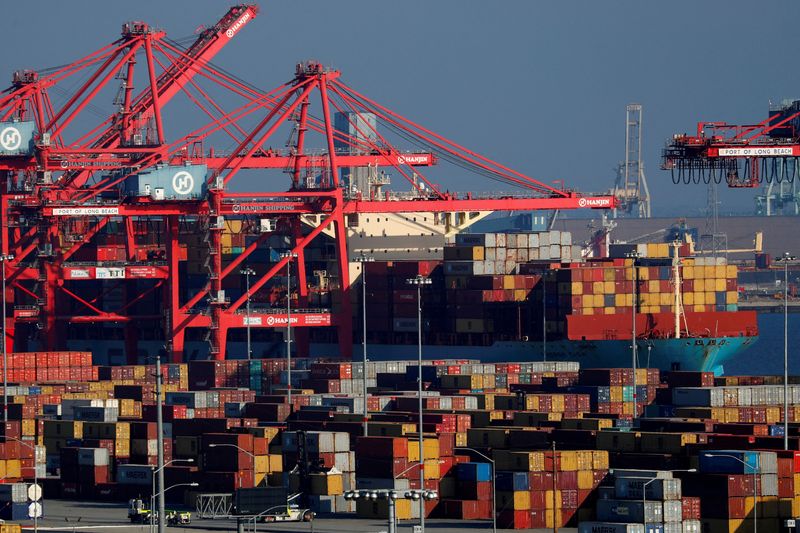NEW YORK (Reuters) – The Institute of International Finance slashed its 2022 growth outlook for global output in half, citing the economic effects of Russia’s invasion of Ukraine, China’s response to a COVID-19 wave and tighter monetary policy in the United States.
The IIF also expects capital flows to emerging markets to shrink by 42% from last year.
Based on its new estimates, the global banking trade group said recession risk had risen as true growth was expected to flatline.
“Weakness is broad-based and leaves little margin for error,” IIF economists wrote in a report. “Global recession risk is elevated. In this context, we expect non-resident flows to emerging markets to slow significantly.”
The IIF cut its forecast for global GDP growth to 2.3% from 4.6%, with the G3 – the United States, the euro area and Japan – growing at a 1.9% rate this year. They expect China’s growth to decelerate to 3.5% from 5.1% in the previous estimate.
“The Omicron wave in China is more disruptive than we anticipated and will take a substantial toll on growth and capital flows,” the IIF said.
Growth in the euro area was previously cut to 1% from 3%, mostly on the effects of the invasion of Ukraine. “Importantly, because the statistical carryover from 2021 into this year is 1.9 percentage points, this is a recession forecast that anticipates falling GDP in the second half of the year.”
Growth in Latin America is forecast slightly faster at 2% on the back of high commodity prices, while the IIF expects “a certain degree of resilience” from Middle East and North African oil exporters.
FOOD SCARCITY A RISK
Export bans of agricultural goods in Russia and India, as well as the expected interruption to the sowing and harvesting in Ukraine, were cited as the IIF cautioned there was a wide risk of global food insecurity, with the Middle East and Africa likely the hardest hit.
“Asian countries are somewhat less exposed to the food price shock stemming from the Ukraine war due to more rice-focused diets, as rice prices have remained relatively subdued in recent years and appear overall less affected by global food price inflation,” the IIF said.
Capital flows to emerging markets and 2022 estimates https://graphics.reuters.com/EM-FLOWS/IIF/dwvkrnjeqpm/chart.png
ba1cffb8-3f81-4385-8e90-09f28227ee271
Capital flows to emerging markets are expected to slow “significantly,” according to the report, with nonresident flows dropping to $972 billion from $1.68 trillion last year. The figure drops to $645 billion when China is left out, down from $1.0 trillion.
Russia is seen posting outflows of about $29 billion after taking in over $58 billion last year and China, the largest single recipient, is seen absorbing $327 billion this year from over $668 billion in 2021.
Mexico, Argentina and Venezuela are among the few Latin American countries expected to see total flows rise this year, though in all cases the increase is from sharply subdued levels. Flows to Brazil are seen almost halving to $55.3 billion.
(Reporting by Rodrigo Campos; Editing by Howard Goller)

















